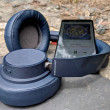ZTE
FCC Will No Longer Authorize Communications Equipment from Huawei, ZTE
The FCC has just adopted an even stricter stance against communications equipment from Chinese companies such as Huawei and ZTE, implementing a more complete ban. The US government has already taken a number of steps to constrain Chinese telecom equipment companies in recent years, effectively shutting them out of the US market, as well as many western markets. But the FCC has still accepted applications from the companies for "equipment authorization", which involves testing radios to ensure compliance with FCC rules that prevent radio interference, etc. This is a requirement for the importation and sale of any radio equipment (or equipment that could interfere with radios) in the US. Now the FCC will no longer issue authorizations for "communications equipment deemed to pose an unacceptable risk to national security". "The new rules implement the directive in the Secure Equipment Act of 2021, signed into law by President Biden last November, that requires the Commission to adopt such rules." While the new rules apply only to new equipment going forward, "The Commission is also seeking comment on future action related to existing authorizations."

ZTE Launches Axon 30 with Hidden Front Camera
ZTE today announced the Axon 30, a more affordable sibling to the already-announced Axon 30 Ultra flagship phone. The Axon 30 is launching today in China, with a global version coming soon. The phone is notable for having a selfie camera completely hidden under the display. 7 layers of highly transparent materials and 3 special processing technologies are used to make the camera area of the display more light-transmissive, and thus sufficiently transparent to the camera. The AMOLED display also features 120 Hz refresh, 360 Hz touch sampling rate, full HD resolution, and 10-bit color depth. The Axon 30 is powered by the Qualcomm Snapdragon 870G chipset. ZTE's "memory fusion technology" allows free storage space to "expand the running memory by up to 5GB". The rear cameras include a 64 megapixel main camera, wide-angle camera, and macro camera. The phone has a 4,200 mAh battery and 55-watt fast charging. Pricing and launch date for the global version are yet to be announced.

ZTE Axon 30 Ultra Drops June 4 with Triple 64-Megapixel Cameras
ZTE today announced the US launch details for its new Axon 30 Ultra flagship phone. It will be available starting June 4th for $749. Pre-orders start May 27th on ZTE's web site and include a free pair of Livebuds TWS earbuds. The Axon 30 Ultra is unique in having three 64-megapixel cameras (standard, portrait orientation, and wide-angle) on the back, plus a fourth camera with 5x optical zoom thanks to a periscope lens. Although ZTE will sell the phone in the US, it is not optimized for US networks, offering only basic support for AT&T's 4G network (LTE 2/4/5/12). It won't support 5G in the US, nor the 4G networks of Verizon and T-Mobile. Other specs include a Qualcomm Snapdragon 888 chip, 6.67-inch AMOLED display with 144 Hz refresh and HDR, and a 4,600 mAh battery. It also features 65W fast charging, NFC, Wi-Fi 6e, Bluetooth 5.2, and in-display fingerprint reader. The standard model comes with 8 GB LPDDR5 RAM and 128 GB UFS 3.1 storage. A step-up option offers 12 GB RAM + 256 GB storage for $849.

ZTE's New Phone for Visible Offers Wireless Charging for Under $200
ZTE today launched the Blade 11 Prime, the company's latest affordable Android phone for Visible. It includes wireless charging, a highly unusual feature for a phone that sells for just $192. The phone has a 4,000 mAh battery and also supports reverse (wired) charging. It has a 6.5-inch HD display, MediaTek Helio P22 processor, 4 GB RAM, and 64 GB storage. The main camera clocks in at 16 megapixel, plus an 8-megapixel wide-angle camera, depth camera, and 8-megapixel front camera. Other features include Android version 11 at launch, a textured back that resists fingerprints, side-mounted fingerprint reader, memory card slot, headset jack, and USB-C. The Blade 11 Prime is available starting today from both Visible and Yahoo Mobile.

Yahoo Mobile Launches ZTE Blade A3Y for $49
Yahoo Mobile has launched the ZTE Blade A3Y, an exclusive purple version of ZTE's Blade A3 preloaded with native Yahoo mobile apps such as Yahoo Mail Pro, Yahoo News, Yahoo Sports, Yahoo Finance, and Yahoo Weather. The A3Y is essentially the same phone as the Blade A3 Prime offered by Visible and the Z2 offered by Gabb. The phone is available now on yahoomobile.com for $49. Certain new customers may qualify to get the phone for free.
ZTE First to Launch Phone with Under-Display Camera
ZTE's next flagship phone, the Axon 20 5G, will have a front camera completely hidden under the display. This technology has been teased by several companies in recent years, but ZTE is the first to launch it commercially. It allows for a truly all-screen design without a notch, "hole punch", or pop-up mechanism. The company will launch the Axon 20 5G in China on September 1st.
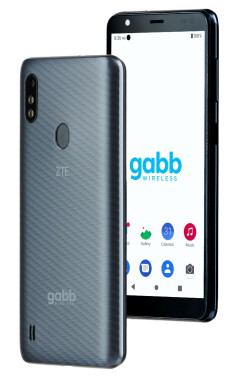
Gabb Offers Updated Phone for Kids
Gabb and ZTE have announced the Gabb Z2, an update to last year's Gabb Z1 phone for kids 8–14. Designed to be a kid's first phone, Gabb phones use Android, but do not offer Internet, games, social media, nor an app store. Gabb's basic plan offers only voice and text, while a new step-up plan also offers MMS for group and picture messaging. Compared to the Z1, the Z2 offers a larger display (5.5-inch) and battery (2,660 mAh), but in a physically smaller body. The Z2 also offers increased camera resolution (8 megapixel), HD display resolution, dual-band Wi-Fi, and Android 10. It also adds a music player app and a memory card slot. Despite the upgrades, Gabb will offer the Z2 for the same $100 price as the Z1. The Z2 will be available for pre-order starting August 8th.

ZTE Brings Entry-Level Blade A3 Prime to Visible
Visible is now offering the ZTE Blade A3 Prime for $99. This entry-level Android phone has a fingerprint reader, dual LED flash, and USB-C. Its 5.45-inch display has HD resolution and a tall, modern 2:1 ratio. Other specs include a 2,660 mAh battery, MediaTek Helio A22 processor, dual-band Wi-Fi, 2 GB RAM, 32 GB of storage, memory card slot, and a 3.5mm headset jack. The rear camera is 8 megapixel while the front is 5 megapixel. It runs Android 10.
Qualcomm, ZTE Successfully Test Voice Call Over 5G
Qualcomm and ZTE today announced that they have successfully tested a Voice over New Radio (VoNR) call. VoNR is essential for the rollout of 5G SA (stand-alone) networks. All current 5G networks are NSA (non-stand-alone), meaning they only work as an add-on to existing 4G networks. On a 5G NSA network, all voice calls happen over the 4G network. With VoNR, 5G SA networks will be able to handle voice calls and operate independently of 4G networks. 5G SA networks will also be more efficient and unlock additional benefits of 5G such as lower latency. The milestone announced today was achieved using ZTE's 5G NR base station and a 5G smartphone form factor test device from Qualcomm.
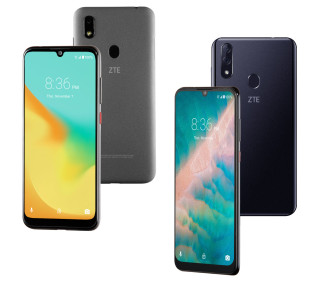
Visible Launches Two ZTE Blades
Verizon-back Visible has launched two new ZTE phones from the company's affordable Blade series.
- The ZTE Blade A7 Prime has a 6-inch HD display with a small notch, 16-megapixel main camera, 5-megapixel front camera, standalone fingerprint reader, 3,200 mAh battery, and MediaTek Helio A22 processor. It also has USB-C, 32 GB of storage, a memory card slot, and a 3.5mm headset jack. It's an LTE-only phone designed for Verizon's network. Visible is offering it for $99.
- The ZTE Blade 10 Prime has all of the features of the A7, but upgrades to a Helio P60 processor, 64 GB of storage, a larger 6.3-inch display with full-HD resolution, faster Cat. 6 LTE, and a 16-megapixel front camera. It also adds NFC and an extra camera on the back for depth (portrait) effects. Visible is selling it for $179. It's also available unlocked as the ZTE Blade 10, also for $179.

Gabb Launches Data-Free Smartphones for Kids
A new kid-oriented phone service launches today nationwide. Gabb Wireless offers basic voice and messaging service for parents who want their kids to be connected, but "protect children from too much technology too soon". Although both phones offered by the company are Android smartphones, they have no data service, no app store, and no games. Gabb service runs $20/month for unlimited SMS and voice. MMS service runs an extra $3/month. Service is pay-as-you-go and contract-free. Gabb offers an entry-level ZTE phone called the Z1 for $100. The step-up offering is the Samsung S1 for $200, which is similar to the Samsung A10e. Compared to the Z1, the S1 offers a larger screen thanks to its modern, tall screen with a small notch. It also offers better cameras and Bluetooth.

ZTE Axon 10 Pro Brings Its Flagship Specs to the US for $549
ZTE today launched a US version of its Axon 10 Pro flagship phone for $549. It comes with more RAM (8-12 GB) and storage (256 GB) than the global version. It also has better support for US 4G LTE networks than most unlocked phones, supporting Cat. 12 LTE across bands 2, 4, 5, 12, 13, 25, 26, 30, 41, 66, and 71, (plus overseas bands). The 10 Pro sports a Qualcomm Snapdragon 855 processor, 4,000 mAh battery, and a 6.5-inch, full-HD AMOELD display with curved sides. Its triple rear cameras include a 48-megapixel main camera (f/1.7), 20-megapixel wide-angle (125º), and 3x telephoto (8 megapixel). The selfie camera clocks in at 20 megapixel. It also has Quick Charge 4.0 fast charging, wireless charging, NFC, memory card slot, water resistance, and an optical in-display fingerprint reader. The design features a deep blue color, matte-finish aluminum frame and 3D curved glass front and back. It comes with Android 9 and a clean Google interface design. It does not have a 3.5mm audio jack, but an adapter is included in the box, along with a fast charger and TPU case. The standard model with 8 GB RAM is available today, unlocked, for $549 from ZTE, B&H Photo, and Newegg. The 12 GB RAM version runs $599.
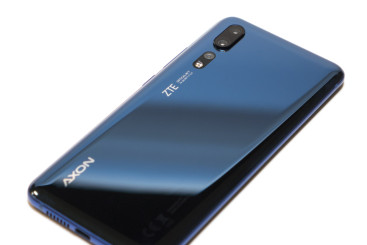
Hands On with the ZTE Axon 10 Pro
ZTE has been relatively quiet in the US recently for political reasons, but they're working on their comeback. They have a new flagship phone, and it will come to the US. It has just about everything you'd want in a flagship phone, and yet ZTE is promising a price closer to that of mid-range phones. We checked it out in person. NEW: Added video.
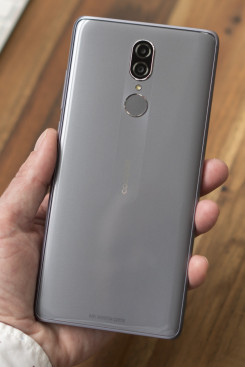
Hands On with the Coolpad Legacy
Very affordable phones with huge screens have been a relatively popular segment in the US in recent years. ZTE used to address this market well. Now, Coolpad is stepping up to offer their take. The Coolpad Legacy indeed has a massive, sharp display, plus a few nice extras like a huge battery, USB-C, and a fingerprint reader. It also has a design with a little personality, carved from metal and Gorilla Glass. That's pretty good for just $130. But what's it like in person? We checked it out.

Visible Offers Free New Phone With Almost any Trade-In
Visible — a relatively new MVNO using the Verizon network and backed by Verizon — is now offering a free new Android phone to new customers who trade in an old Android phone. Unlike most trade-in offers, any working Android phone is accepted, as long as it turns on, is paid off, and is not already compatible with Visible (making the Galaxy S9 and S9+ ineligible). The free new phone is the Visible R2 by ZTE, which has a fingerprint reader, 13-megapixel camera, 2:1 HD display, USB-C, and normally sells for $99. Visible will ship the new phone first, giving customers 14 days to send in the old phone, so new customers are never without a phone. There are no activation fees, shipping fees, taxes, or contracts. Visible offers unlimited service for $40/month, although data is limited to 5 Mbps speeds. The company has no physical locations, offering activation, support, and all customer interactions via its app.
Huawei Sues US Government, Appealing Ban on Buying Huawei Gear
Huawei is appealing a recent law restricting the purchase of Huawei and ZTE products at the federal level. Huawei is suing the US government in a Texas court, where its US headquarters is located. The law in question is the most recent National Defense Authorization Act. It bars the federal government from buying Huawei gear directly, and from doing business with companies that use a substantial amount of Huawei hear. It also prevents private companies from using federal grants or loans to purchase Huawei gear. Huawei claims these provisions are unconstitutional because they violate its right to due process, and are a violation of the separation of powers.

Snapdragon 845 for $400: Hands On with the Nubia Red Magic Mars
The Red Magic Mars is a gaming phone with a much more affordable price than other gaming phones, without skimping on the key specs. Nubia (a subsidiary of ZTE) revealed at CES that it plans to bring the Mars to the U.S. in the coming weeks. The base model has a top-end Snapdragon 845 processor paired with a generous 6 GB of RAM and 64 GB of internal storage for just $400. Step-up models offer 8 or 10 GB of RAM as well as more storage. The 6" display has a 2:1 shape and FHD+ resolution (2160x1080). Its gaming chops include a large 3,800 mAh battery, performance mode, advanced cooling, configurable capacitive shoulder buttons, a dedicated physical switch to enter gaming mode, and a highly customizable strip of animated RGB lights on the back. It also has a 16 megapixel camera and fingerprint reader. Read on for our first impressions.
Trump May Declare a 'National Emergency' to Block Huawei, ZTE
President Donald Trump is weighing new action against Chinese telecommunications equipment makers Huawei and ZTE, says Reuters. The President might issue an executive order that would bar U.S. companies from buying telecom gear from either. Some in the U.S. government insist Huawei and ZTE have deep ties to the Chinese government. That relationship could give China the power to spy on the U.S., a claim Huawei has denied many times. Trump has been considering the executive order for more than eight months. The order would rely on the Department of Commerce to block equipment purchases from "foreign telecommunications makers that pose significant national security risks," say Reuters' sources. Huawei and ZTE themselves may not actually be named in the order. Such an order would hinge on the International Emergency Economic Powers Act, which gives the President power to govern commerce directly when a national emergency threatens the U.S. Trump has already barred the U.S. government itself from purchasing equipment from Huawei and ZTE. The four largest carriers mostly rely on equipment from Ericsson, Nokia, and Samsung, but smaller, rural operators do use gear from Huawei and ZTE. They are worried the Trump administration will force them to rip out existing Chinese-made gear at their own expense. Reuters says Trump may issue the order as soon as January.
U.S. Gov't Sets Sights on Huawei for Violating Iran Sanctions
The Wall Street Journal reports that Canadian authorities have arrested the CFO of Huawei — who is also the founder's daughter — at the request of U.S. authorities. The charge relates to alleged violations of U.S. sanctions on Iran. The U.S. government made a similar case against ZTE (Huawei and ZTE are both Chinese companies,) which at one point threatened ZTE's entire global business. The government has already pressured U.S. companies and allied governments to stop doing business with Huawei over spying concerns. This new action against Huawei will likely affect the current administration's on-again/off-again trade war with China. The executive, Meng Wanzhou, will be extradited to the U.S. and face a bail hearing on Friday.
Senators Want ZTE's Link with Venezuela Probed by White House
ZTE has fallen into the U.S. government's crosshairs once again, this time thanks to its involvement with Venezuela. Earlier this month, Reuters reported that ZTE supplied Venezuela's state telecommunications firm with gear from Dell. The equipment helped Venezuela create a database that uses something called the "fatherland card" to track citizens' behavior. Data collected by the card and the Venezuelan government includes financial and medical history, social media use, political affiliation, and whether a person voted. Senators Chris Van Hollen (D) and Marco Rubio (R) plan to submit a letter to the U.S. secretaries of state, treasury, and commerce to determine if ZTE collaborated with people under U.S. sanction, whether the U.S. gear was used unlawfully, and whether ZTE helped Venezuela spy on its citizens. Hollen and Rubio are concerned that ZTE used Dell's equipment in the database. The senators want to know "whether ZTE violated U.S. export controls with respect to the installation of data storage units built by Dell." ZTE is effectively on parole with the U.S. government. In April, the U.S. accused ZTE of violating a previous settlement concerning illegal equipment sales to Iran and North Korea. The company paid a $1 billion fine after it slogged through a three-month ban on the use of U.S. hardware and software. Many Venezuelan government officials are under sanction by the U.S. for authoritative behavior and human rights violations. If ZTE did in fact sell Dell equipment to Venezuela's government that was then used to spy on the people of Venezuela, it's possible ZTE violated its agreement with the U.S. Dell said it has no record of a sale to ZTE. No parties from the Venezuelan government or from ZTE commented on Reuters' story.
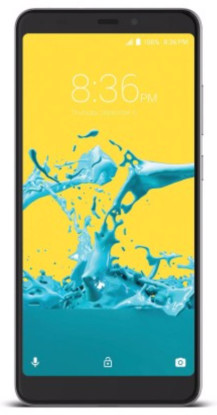
ZTE Brings Two Low-Cost, Unlocked Phones to the U.S.
ZTE is taking its first, cautious steps in staging a comeback in the U.S. market with two entry-level phones that can run on Sprint, Verizon, and GSM networks. The Blade Max View and Blade Max 2s (pictured) both cost under $200 and offer big screens and big batteries. Shared features between the two include 6-inch displays with full HD+ resolution, dual-band WiFi, Bluetooth 4.2, USB-C, memory card support, 4000mAh batteries, basic GSM/LTE for AT&T/T-Mobile, fingerprint readers, and a clean version of Android 7 Nougat.
- Blade Max View: This is the slightly more capable of the two phones. It is powered by a Snapdragon 435 processor with 3 GB of RAM and 32 GB of storage. The dual-camera configuration includes a 16-/2-megapixel combination. The main sensor has a five-element lens at f/2, while the secondary sensor has a three-element lens at f/2.4 The second sensor is meant chiefly for contrast and depth-of-field information for bokeh photos. The phone has an 8-megapixel front camera. The Blade Max View provides Cat 6 LTE on Verizon Wireless.
- Blade Max 2s: This is the spiritual successor to the Max XL. It is powered by a 1.4 GHz processor with 2 GB of RAM and 32 GB of storage. It includes a 13-megapixel main camera and a 5-megapixel selfie camera. The Blade Max 2s works well on Sprint's LTE 4G network.
Fortnite for Android No Longer Requires An Invitation
Epic Games today made its popular Fortnite game available without an invitation. The app has been available in beta since August, though an invite was required for access. Epic Games has dropped the need for an invitation and most anyone can download the game. Fortnite is not available in the Google Play Store. Instead, people interested in the game will need to go to Epic's web site to download an installer. The installer then puts the game on the phone. The game started as an exclusive to the Samsung Galaxy Note9 and was later discovered to have a major security flaw in the installer (since patched). Fortnite is best played on high-end devices that have Android 8 Oreo installed. Some compatible phones include the Samsung Galaxy S7, S8, and S9 series; all Google Pixel phones; the LG G5, G6, G7, V20, and V30; the Asus ROG Phone and 5Z; the Essential Phone; the Huawei Mate 10, Mate 10 Pro, Honor 10, and Honor Play; the OnePlus 5, 5T, and 6; the HTC 10, U Ultra, U11+, U12+; the Sony Xperia XZ1, XZ2, and XZ3 series; as well as a handful of others from Xiaomi, ZTE, Nokia, and Lenovo.
ZTE Found Guilty of Violating 2017 Probation
A judge this week says ZTE violated the terms of the probation imposed on the company in March 2017, when it admitted to illegally shipping technology to Iran. ZTE settled with the government then and agreed to a probationary period through 2020. The judge now says ZTE violated its probation when it made false statements to the U.S. concerning disciplinary actions it was supposed to take against its managers. This same action caused ZTE to run afoul of the Commerce Department, which in April banned ZTE from using U.S. parts and software. That ban was lifted in July after ZTE paid a $1 billion fine, put $400 million more into escrow, and fired dozens of managers. U.S. District Judge Ed Kinkeade extended the term of a U.S.-appointed monitor two more years, through 2022, for violating its probation. A separate monitor from the Commerce Department will oversee ZTE's importing and exporting activities for a period of 10 years.
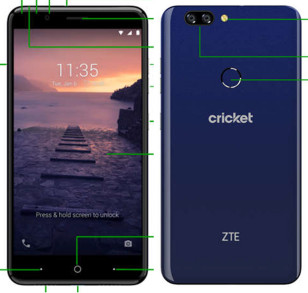
ZTE Blade X2 Max Pops Up On FCC Website, But Its Future Is Uncertain
The FCC today revealed the ZTE Blade X2 Max in documents made public on the agency's website. The phone, a follow-up to the Blade X Max, appears to be bound for Cricket Wireless based on branding seen on the user manual and AT&T LTE banding (14/30). Other features confirmed by the FCC include dual rear cameras, a rear-mounted fingerprint reader, a 3.5mm headphone jack, and a USB-C port for charging. The Blade X2 Max relies on a nano SIM card and the tray also supports microSD memory cards. The phone's screen adopts the 16:9 aspect ratio. The draft user manual makes reference to the size of the display, which it says measures 6 inches with full HD resolution. The manual also indicates the battery may be 4,080mAh, and the phone may include 2 GB of RAM and 32 GB of storage. Last, the manual notes the phone's two rear cameras are a 16-megapixel main sensor and a 2-megapixel depth sensor. The front camera is 8 megapixels. Information found in the draft user manual is subject to change. Given ZTE's current position in the U.S. market, it is possible this phone will never reach the market. ZTE was forced to put operations on hold for three months after the U.S. banned it from accessing U.S.-made parts and software. ZTE only returned to full operations in July. The company says it still considers the U.S. market vital to its success. ZTE implied it will most likely sell new devices direct to consumers online rather than through carrier distribution deals. Cricket has not confirmed that it will sell the ZTE Blade X2 Max.
Congress Wants to Drop the Hammer on ZTE Should It Mess Up
A new bipartisan bill in the Senate would see ZTE smacked with heavy fines if it were to violate its settlement agreement with the U.S. ZTE reached an accord with the U.S. earlier this year over its skirting of prior settlement agreements. The company paid a hefty fine and agreed to put an additional $400 million in escrow, as well as replace most of its management. The deal was largely brokered by the Trump administration and allowed ZTE to resume business operations after the U.S. government banned it from using U.S.-made hardware and software. Despite support from the Trump administration, the deal was not popular among some members of congress. That’s why three Republican and three Democratic senators introduced a bill this week that would cause ZTE to forfeit the $400 million in escrow if it violates its new agreement. The authors of the bill want to see reports from ZTE concerning its compliance every 90 days. "This bipartisan legislation would ensure that if ZTE once again violates trade restrictions or its agreement with the U.S., it will be held accountable in a significant, painful way," said lead sponsor of the bill, Senator Mark Warner, who also serves on the Senate Intelligence Committee. The bill still needs to pass the Senate, the House of Representatives, and be signed by the President before it could be considered law.
ZTE Committed to US Market, Denies Security Risk
Now that ZTE has resumed full operations, the company is focused on rebuilding its U.S. business. While the new Axon 9 Pro flagship is not going to be sold in the U.S, ZTE does plan to bring at least one new phone to the U.S. market before the end of the year, said executive Jeff Yee. ZTE is working to repair its relationships with U.S. carriers, where it found success with affordable phones with large screens. Yee wouldn't say if it's next U.S.-bound device will be a low-cost phone or a premium phone. Initially, the company will likely sell new devices through the open market, rather than via carriers. ZTE also flatly denies that its phones pose any sort of security risk to Americans. The U.S. government has targeted ZTE and Huawei this year, claiming phones from the two companies could be used by the Chinese government for spying. The government has issued orders preventing government workers from using ZTE or Huawei phones for government work. Yee says the company doesn't send any data from its phones to China, and its phones are secure. ZTE believes it can recoup at least some of its lost business as it pushes forward.
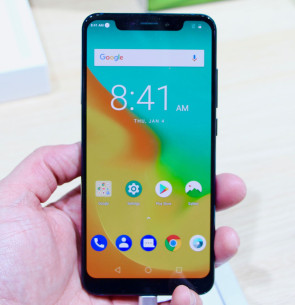
Hands On with the ZTE Axon 9 Pro
ZTE is back! After facing a hard-hitting ban on parts and software, the China-based phone maker is up and running full steam once more. ZTE decided the IFA trade show was a suitable place to launch its first true flagship since 2016, the new Axon 9 Pro. Here are our first impressions of ZTE's come-back device.

ZTE Axon 9 Pro Puts AI to Work
ZTE today announced the Axon 9 Pro, its first real flagship device since the 2016 Axon 7. This new phone adopts a metal-and-glass design with 2.5 curved glass on front, a metal frame, and glass on the back. The phone offers a 6.2-inch full HD+ (2,248 x 1,080) AMOLED screen with what ZTE calls Axon Vision. Axon Vision uses AI to change the screen's settings in real time to ensure the best color and brightness given the environment. The screen relies on an independent display processing chip with MEMC (motion estimation, motion compensation) technology, which can boost 24/30fps video to 60fps for smoother playback. Last, the display supports HDR10 video playback. A Snapdragon 845 provides the brains of the operation and it is aided by 6 GB of RAM, with 128 GB of internal storage. The dual-camera configuration relies on the 845's AI capabilities to introduce new features. The main camera has a 12-megapixel sensor at f/1.75 with optical image stabilization, autofocus, and dual photo diode. The secondary camera has a 20-megapixel sensor and a 130-degree wide angle of view. The front camera has a 20-megapixel fixed-focus camera with face detection. The AI features include intelligent motion tracking for constant focus, smart portraiture, and better slow motion. The phone has a 4,000mAh battery that ZTE says is optimized via constant AI-based evaluation. It will proactively shut down background apps that are draining power. The battery supports rapid charging and Qi-based wireless charging. A fingerprint sensor is located on the rear and the phone is IP68 certified for protection from water/dust. Radios include NFC, dual-band 2x MIMO WiFi, Bluetooth 5.0, GPS, and LTE. Last of the major features are stereo speakers with Dolby Atmos for clear, loud sound. The phone ships with Android 8.1 Oreo. Pricing is expected to be in the neighborhood of $750. ZTE says the device is chiefly intended for overseas markets.
ZTE Says Axon 9 Flagship to Mark Debut in Berlin This Week
ZTE today said it plans to announce its flagship phone of the year during the IFA trade show taking place in Berlin. ZTE has a press conference scheduled for August 30, which is when the device will be unveiled. ZTE has been quiet since the spring months when the U.S. banned the company from using parts and software from American companies. ZTE was forced to pay a fine and agree to replace many of its executives to appease the U.S. government. It also had to install a U.S.-appointed compliance officer to ensure the company doesn't cross the line again. It didn't resume full operations until July. ZTE did not provide any details about its new flagship phone. Its last major device was the Axon M, sold by AT&T last fall. The Axon 7 flagship debuted in the summer of 2016. The Axon 9 arrives at a time of intense competition between Chinese firms such as Huawei, OnePlus, Oppo, and others.
Australia Won't Let Huawei Provide 5G Gear to Telcos
Australia has banned Huawei from supplying equipment for future 5G mobile networks. Australia made the argument that Huawei poses a threat to its national security. Huawei is one of the world's largest suppliers of telecommunication's gear. Chinese firms are required to help the Chinese government engage in espionage when asked. Huawei says China-based ZTE is also being prevented from supplying 5G networking gear to Australian wireless companies. China said the move was an "excuse to artificially erect barriers and conduct discriminatory practices." Australia's move mirrors the stance of the U.S., which has barred Huawei and ZTE from providing the networking gear for wireless networks. The U.S. has gone further in mandating that government employees don't use phones made by Huawei or ZTE.
US Gov Workers Barred from Using Huawei, ZTE Devices
President Trump this week signed the Defense Authorization Act, which bans the use of Huawei or ZTE devices by government personnel. The Defense Authorization Act is an annual piece of legislation that provides funding to the military. Congress added language to the act that makes it illegal for any government employee to buy or use devices or components from either Huawei or ZTE, both of which are considered by some to be security threats. The move puts a bookmark at the end of a tumultuous year for Huawei and ZTE, which have seen their U.S. businesses come under attack. Early in the year, Huawei lost distribution deals with AT&T and Verizon. Later, ZTE was hit with a ban on using U.S. components and software. ZTE was forced to pay a significant fine and agree to other conditions in order to get back to business. The ban on government use of Huawei and ZTE gear goes into effect over the next two years.
DNC Tells Democrats to Stop Using Phones from Huawei, ZTE
The Democratic National Committee has told candidates running as Democrats this fall they should not use phones made by Huawei or ZTE. The Trump administration says they represent a security risk. Earlier this year, the administration pressured AT&T and Verizon to drop plans to sell Huawei devices. Best Buy also stopped selling Huawei devices. "Please make sure that you are not using or purchasing ZTE or Huawei devices anywhere within your staff — for personal or work-related use," said Bob Lord, the DNC's chief security officer in an email to party members. FCC Chairman Ajit Pai also believes Huawei represents a threat of espionage. Huawei phones are not sold on military bases. Neither Huawei nor ZTE commented on the matter.
Anti-ZTE Clause Stricken from Defense Bill
Senators have overturned an agreement added to the National Defense Authorization Act, or NDAA, that would have made it more difficult for President Trump to remove the ban instituted against ZTE. Earlier this year, the Commerce Department said ZTE lied about a previous settlement and banned the company from using American parts or software in its phonres for a period of seven years. The ban crippled ZTE, but was eventually overturned by the Trump administration. ZTE got back to business earlier this month. Seeking to block Trump from easing up on the ban, members of the Senate added language to the NDAA that sould have made it difficult for Trump to get around the ban. It didn’t work. Now that Trump the administration and Commerce Department have agreed to let ZTE return to business, members of the Senate have removed the anti-ZTE language from the NDAA. "By stripping the Senate’s tough ZTE sanctions provision from the defense bill, President Trump — and the congressional Republicans who acted at his behest — have once again made President Xi and the Chinese Government the big winners," said Senator Chuck Schumer in a statement. The NDAA is vital legislation that must be passed every year in order to ensure the Department of Defense is funded.
ZTE Allowed to Return to Business
The U.S. Commerce Department has lifted its ban on U.S. companies doing business with Chinese phone and telecom equipment maker ZTE. The company can now resume operations, after all but shutting down since April due to the ban. The company is highly dependent on U.S. companies, including Qualcomm and Google, for its smartphone chips and software. The deal to lift the ban was done at the instruction of President Trump, and includes a $1 billion fine and a complete change of ZTE leadership. Today's action marks the end of a years-long saga that started when ZTE was caught selling equipment to North Korea and Iran in violation of a U.S. embargo.
ZTE Makes Progress Toward Resuming Business
ZTE has now replaced four of its top leaders (CEO, CFO, CTO, and head of HR) and its entire board of directors, as required by a tentative deal with the U.S. government. The company has also agreed to pay a $1 billion fine. With these steps complete, the U.S. Commerce Dept. may soon lift the sales ban that has forced the company to suspend all operations since April. In the meantime, the government has granted ZTE a one-month waiver allowing it to resume providing support for its products for the month of July. While ZTE is Chinese company, it is highly dependent on U.S. suppliers — including Qualcomm and Google — which is why the Commerce Dept.'s ban on doing business with U.S. companies has effectively shut down the company. The deal to lift the ban was announced last month, and has President Trump's strong support. In Congress, the Senate version of a pending defense-policy bill would override the Commerce Dept. and keep the sales ban in place. The House version of the bill does not contain that language, a difference that remains to be reconciled.
ZTE Prepping Overhauled Board to Get Past US Ban
ZTE is nearly ready to install a new board of directors, a step required by the U.S. Department of Commerce if the company wants to end the ban on U.S. supplies. The company held its annual general meeting in Shenzhen this week where shareholders voted on this and other matters. ZTE is expected to name eight new members to its board. In April, the Commerce Department banned ZTE from using U.S. parts and software, crippling the company. On June 7, the Commerce Department said it would end the ban as long as ZTE pays $1 billion fine, puts $400 million into escrow, and replaces its leadership. In addition to the new board, the Commerce Department wants all executives at or above the senior vice president level to be fired, along with any execs who played a role in the wrongdoing. ZTE will also have to put in place a U.S.-appointed compliance officer. The company has already paid the $1 billion fine. Once all these steps are taken, ZTE will have met the Commerce Department's conditions. Even if it does, it is unclear when the company might be allowed to get back to business. A number of senators and congressmen want the ban to remain in place. Since the ban went into effect, ZTE has been largely idle. Its shares have dropped 60%, erasing $11 billion from its valuation. The new board may be voted in as soon as today.
Commerce Department Says ZTE Has Paid $1 Billion Fine
ZTE has taken the first step toward resuming operations by forking over $1 billion to the U.S. Department of Commerce. The fine is part of a new agreement the company reached with the government in an attempt to end the destructive ban that prevents it from buying U.S. software and hardware. ZTE still has to put $400 million into escrow and rearrange its top leadership, which are also aspects of the agreement. ZTE will lose the $400 million if it skirts the rules again. The company was punished for breaking a 2017 settlement over illegal sales to Iran and North Korea. ZTE misrepresented to U.S. officials how it handled portions of that earlier settlement. The Commerce Department then banned ZTE from using U.S. products for a period of seven years, which has effectively forced the business to cease operations. The new agreement was brokered by the Trump administration, but it is encountering resistance from members of Congress. It's unclear if or when the Trump administration and Congress will reach a final agreement over the company's fate.
Trump Agrees to Talk to Congress About 'Problematic' ZTE
ZTE will be the topic of discussion at a meeting today between President Trump and members of the Senate and House of Representatives, reports Reuters. Trump wants to talk about the "problematic" amendment made to the National Defense Authorization Act (NDAA) earlier this week, which will keep certain sanctions against ZTE in place. The administration and lawmakers have different viewpoints on what to do with ZTE. The company was caught lying about a 2017 settlement over exports to Iran and North Korea in violation of sanctions. As a result, the Department of Commerce banned U.S. companies from selling ZTE software or hardware for a period of seven years. The ban has effectively put ZTE out of business, as it is unable to buy the components it needs to make phones. The Trump administration wants the ban lifted and the Commerce Department agreed to a new fine along with required management changes at ZTE. Members of the Senate and House, however, contend that ZTE's punishment was fair and should be upheld. Despite the Commerce Department agreement, Senators added language to the NDAA that keeps the sanctions in place, putting it at odds with the Trump administration. The White House confirmed that the meeting will take place, but did not specify the attendees.
Senate Votes to Uphold ZTE Ban in Defense Bill
The Senate approved legislation that would see the ban against ZTE remain in place. The chamber on Monday voted in favor of the National Defense Authorization Act (NDAA), a bill passed by the Senate every year. Republican Senator Tom Cotton and Democratic Senator Chris Van Hollen introduced a measure to the bill earlier this month that restores the penalties against ZTE. ZTE was sanctioned for violating the terms of a 2017 settlement agreement over unlawful sales to Iran and North Korea. Beginning in April, the company was cut off from U.S.-made hardware and software for a period of seven years. The company has largely been idle since. The Trump administration sought to help ZTE and the Commerce Department reached an agreement with the company. Under the terms of the arrangement, the Chinese phone maker must pay a $1 billion fine, put $400 million into escrow, wholly change its top leadership within 30 days, an accept a U.S.-led compliance officer. Now that the NDAA has passed in the Senate, it has to be reconciled with the House of Congress' version of the NDAA and later signed by the President. It's unclear how the Senate, House, and President will resolve the issue.
3GPP Approves Spec for Standalone 5G New Radio
The 3GPP today ratified another piece of the 5G specification, termed the Standalone 5G New Radio, or SA 5G NR. This spec is for 5G networks that are developed on their own, apart from legacy or pre-existing networks. The Non-Standalone portion of the 5G spec was ratified late last year and covers 5G that hooks into existing LTE 4G systems. "The freeze of Standalone 5G NR radio specifications represents a major milestone in the quest of the wireless industry towards realizing the holistic 5G vision," said Balázs Bertényi, chairman of 3GPP RAN. "5G NR Standalone systems not only dramatically increase the mobile broadband speeds and capacity, but also open the door for new industries beyond telecommunications that are looking to revolutionize their ecosystem through 5G." The SA 5G NR and the NSA 5G NR standards will together include the technology used by commercial entities, the air interface, and end users. The spec was approved by more than 600 delegates from the world's leading carrier, handset, and silicon vendors. Some participants included AT&T, DISH, Ericsson, Huawei, Intel, Kyocera, LG, MediaTek, Nokia, Qualcomm, Samsung, SoftBank/Sprint, Sony, Verizon, Xiaomi, and ZTE. The 3GPP said the technical specifications for the ratified SA 5G NR will be published in the days ahead.


























